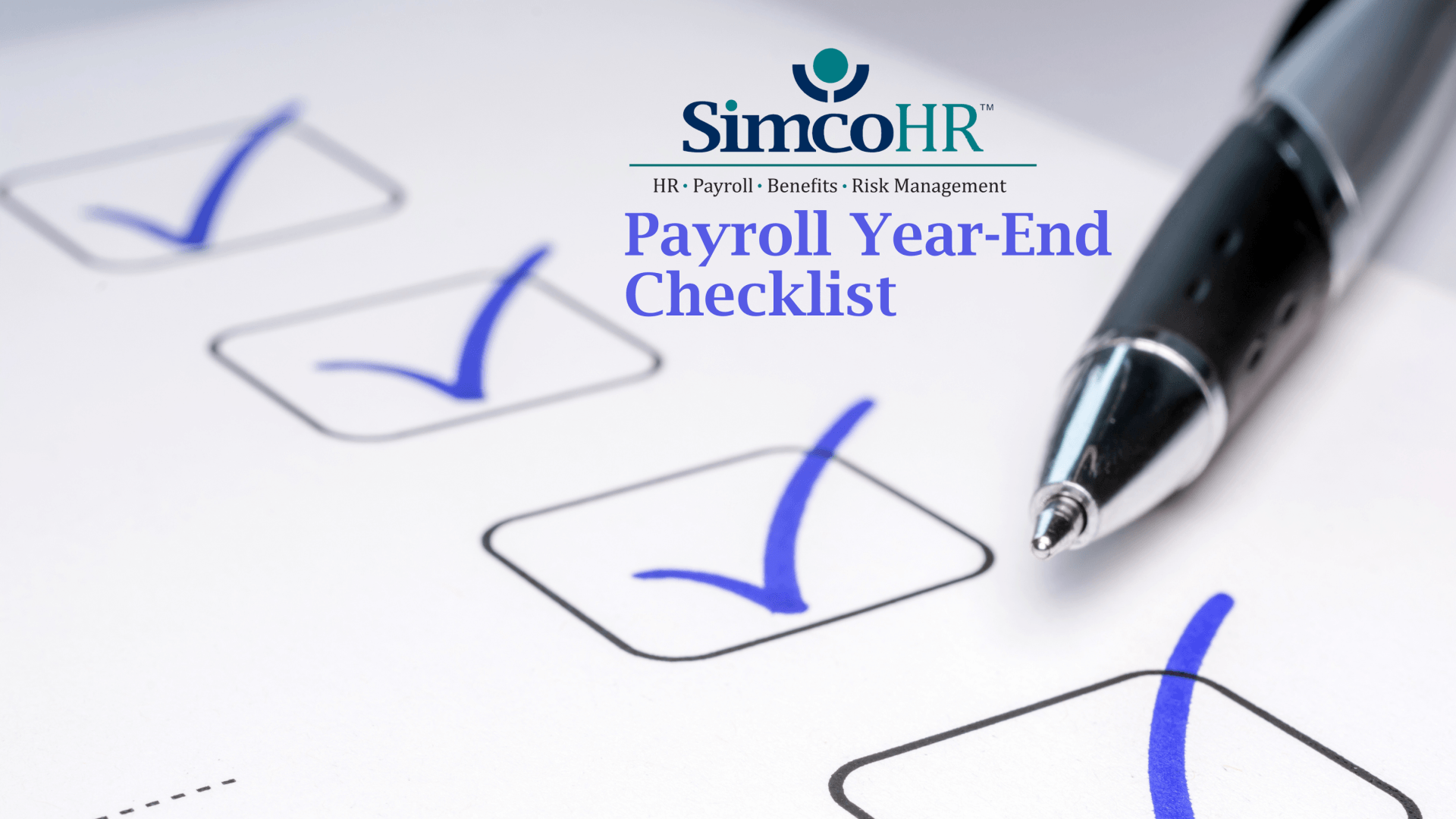January 5, 2026
As the business landscape continues to evolve, so does Simco. While 2025 may have looked like a year of quiet focus from the outside, it was anything but. Behind the scenes, our teams were strengthening the systems and structures that support our HCM / payroll, benefits, HR, retirement, and commercial insurance services, all with one goal in mind: to deliver a smoother, more dependable, and more proactive client experience. This recap offers a high-level look at what we’ve been building. If you're part of our existing client community, you’ll see how these investments enhance the service you receive every day. And for prospective partners and the broader market, consider this a window into how Simco is evolving to meet the growing expectations of the modern employer. A Stronger Foundation for the Future Much of our work throughout 2025 focused on reinforcing the operational backbone of Simco: the processes, tools, and training that enable our teams to support clients with consistency and confidence. We refined and standardized the core elements of our service model, including: Onboarding processes: creating a smoother, more predictable start for new clients by clarifying steps, responsibilities, timelines, and handoffs, ensuring everyone begins their Simco partnership with full visibility and support. Day-to-day service workflows: enhancing how requests are managed, tracked, and communicated so that clients experience faster responses, fewer delays, and a more proactive approach to problem-solving. Renewal experiences across multiple service lines: strengthening the structure behind annual renewals so they are more organized, timely, and transparent, with clearer communication and better preparation on both sides. By strengthening the infrastructure that supports every client interaction, we’re ensuring that growth never comes at the expense of quality. Communication That Sets Clear Expectations One of the most meaningful shifts this year came from improving the clarity and cadence of communication. Whether you're a current Simco client or exploring us as a potential partner, you’ll see a growing emphasis on: Setting expectations early: ensuring clients understand timelines, responsibilities, next steps, and key milestones upfront so there’s no confusion as projects or service requests move forward. Addressing issues proactively: identifying potential challenges before they surface, communicating them quickly, and offering solutions early to prevent disruptions. Creating more transparency in every interaction: providing clearer insights into processes, status updates, and decision-making so clients always know where things stand and what’s happening behind the scenes. This work helps eliminate surprises and creates a smoother, more predictable experience. Technology That Makes Service Smarter 2025 also brought strategic technology upgrades designed to improve accuracy, efficiency, and visibility. Some key milestones include: Expanded use of integrations and automations across platforms like isolved Enhanced reporting and improved data accuracy New tools to support onboarding, renewals, and Open Enrollment The build-out of our new CRM, rolling out internally to employees in January 2026 For our clients, this CRM will grow into a client-facing portal that ultimately brings our services together in one place. It will give you clearer visibility into service activity, smoother access to support, and a more connected experience across everything you work with us on. We’re genuinely excited about what this unlocks, not just in terms of upgrading technology, but in how it helps us close gaps, improve communication, and support you more seamlessly across all areas of your business. A More Coordinated Open Enrollment Season The Simco Benefits Team completed Open Enrollment two weeks faster than the previous year, thanks to strengthened planning, better communication, and tighter internal coordination. This improvement reflects our broader goal: to create processes that scale with growing demand while remaining predictable and client-centered. A Strategic Shift: Separating Our B2B and B2C Divisions In 2025, we completed the structural separation of our consumer-facing services, Simco Insurance & Wealth Management, from our core B2B operations. This was not simply an internal reorganization, but a strategic step toward honoring the very real differences between the needs of businesses and the needs of individuals and families. Employers require scalable systems, predictable processes, and deep operational support. Individuals, on the other hand, seek personalized guidance, protection, and long-term financial clarity. By creating space for each division to develop independently, we positioned both sides of our organization to serve their audiences with greater intention and expertise. As our service offerings have expanded, so has the complexity of the problems we solve. The separation enables our B2B team to focus fully on the demands of an employer environment, including compliance, data accuracy, HR workflows, benefits strategy, service scalability, and beyond. At the same time, the B2C division can continue developing its advisory capabilities, client education tools, and one-to-one support models. Both sides continue to share the same core values, high standards, and service philosophy, but each now has the room to innovate in ways that make the most sense for the communities they serve. We want to ensure that whether you’re engaging with Simco as an employer, or with Simco Insurance & Wealth Management as an individual or family, you’re connected to a team built specifically for your needs without losing the warmth, consistency, or integrity that define the Simco brand. Growing Without Losing What Makes Us, Us and What This Means for Those We Serve 2025 was a year of meaningful expansion for Simco through new partnerships and client relationships. But growth alone isn’t the metric we celebrate, it’s sustainable growth. Behind the scenes, we focused on building structure and scalability so that every new relationship receives the same level of attention and consistency our long-standing clients expect from us. Whether you're already part of the Simco family or seeing us for the first time, here’s what our 2025 investments translate to: More consistency in how we serve Greater proactivity in identifying and addressing issues Enhanced accuracy and efficiency throughout every process Improved capacity to support continued growth and complexity A stronger, smarter foundation for the years ahead To our current clients: thank you for trusting us with your business. Everything we built this year was designed to enhance the experience you rely on. To those learning about Simco for the first time: consider this a preview of the service structure we believe all employers should expect, both today and in the future. Looking Ahead to 2026 We’re entering the new year with momentum, clarity, and a renewed commitment to continuous improvement. The work we completed in 2025 positions us to deliver an even more streamlined, transparent, and dependable experience in 2026 and beyond. Thank you for being part of our journey and for giving us the opportunity to support yours. This year-in-review report was developed by Elisha Everson, Director of Operations at Simco.





